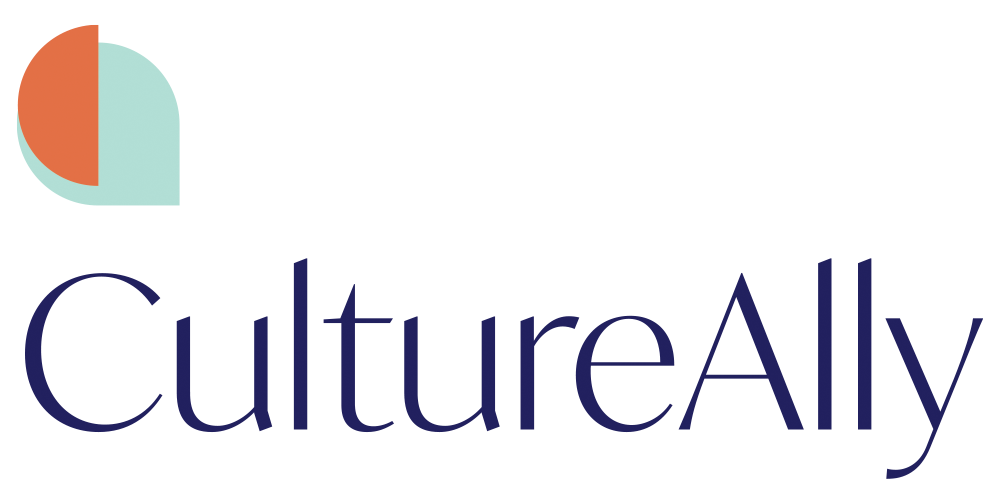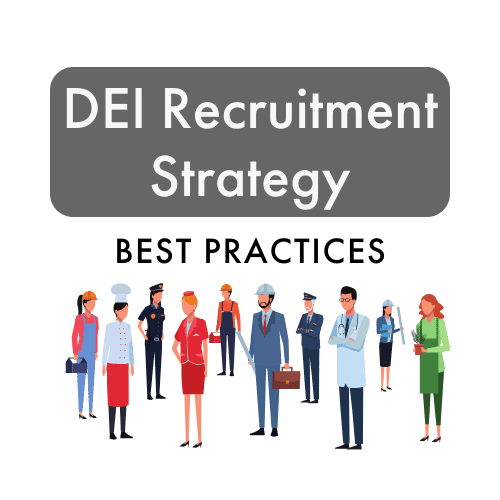DEI Recruitment Strategy: Best Practices
In recent years, what is expected of companies regarding diversity, equity, and inclusion (DEI) efforts has undergone a significant transformation.
Factors such as the global pandemic, which heightened awareness of employee treatment, and the entrance of Gen Z into the workforce, the most racially and ethnically diverse generation yet, have changed the landscape.
As a result, cultivating an inclusive recruitment strategy has become a top priority for organizations aiming to attract and retain top talent amidst these shifting trends.
Why DEI in Recruitment is a Necessity
Implementing DEI practices in recruitment has become an essential component of a successful and sustainable organization. Here are three reasons why DEI in recruitment is key:
Innovation and creativity
A diverse workforce enriches the organizational culture by bringing together individuals from various backgrounds and experiences. This diversity fuels innovation and creativity, as different perspectives often lead to fresh ideas and innovative problem-solving approaches.
Market responsiveness
As Microsoft states on its diversity and inclusion page, “Employees who represent the markets we serve give us consumer insight, creativity, and real-time market innovation”. Thus, an alignment with market demographics can lead to a more competitive edge.
Talent attraction and retention
Studies have shown that employees are more likely to stay with organizations that align with their values. In fact, 71% of workers expressed their willingness to depart from a company that lacks alignment with their personal values.
Prioritizing DEI in recruitment helps retain employees who feel valued and respected while attracting a diverse pool of talent.
3 Steps to Building a DEI Recruitment Strategy
Conduct a DEI audit for a data-driven approach
Start by assessing your organization's current diversity metrics. Use DEI surveys to gather employee feedback on their experiences and perceptions regarding diversity, equity, and inclusion.
The results of the survey will allow you to understand where your organization may be underperforming.
Look for trends such as:
Dominant groups of gender, ethnicity, age, or other identifiers
Underrepresented backgrounds
Overall employee sentiment toward existing DEI efforts
This data will serve as a benchmark for evaluating your performance going forth.
2. Define your organization’s DEI goals and values
With insights from the audit, you can begin to identify opportunities for change. Create a mission statement to guide your DEI efforts and set clear DEI objectives.
As you set your goals, be transparent about the challenges your organization experiences with DEI and the progress you intend to make. Regularly communicate updates to employees and stakeholders to maintain trust and accountability.
Here is an example of a well-thought-out diversity and inclusion statement from Adobe:
“At Adobe, we believe that when people feel respected and included they can be more creative, innovative, and successful. While we have more work to do to advance diversity and inclusion, we’re investing to move our company and industry forward.”
Examples of DEI goals from notable companies:
% of diverse candidates out of overall candidates
Popeyes has committed to ensuring that for every corporate position it fills, at least 50% of candidates must be from diverse backgrounds.
% of diversity hires
Google has committed to doubling the number of people of color in non-leadership roles in the US by 2025.
% of representation in leadership
In 2020 Meta challenged itself to increase the number of people of color who hold US leadership positions to 30% in 5 years.
3. Establish leadership buy-in
Pursuing any DEI goal is a substantial undertaking, highlighting the significance of securing support from the executive team.
Senior management must demonstrate genuine dedication to the organization's DEI initiatives, assume responsibility, and allocate resources, including financial support for DEI training to support the strategy.
For example, when Google embarked on its journey to create diversity programs, initial resistance to change was encountered. Google's initiative included a comprehensive 12-week diversity and inclusion training program, which initially faced skepticism from leadership who saw it as a potential diversion from meeting deadlines and achieving sales targets.
Nevertheless, Google's sustained commitment to DEI efforts have yielded substantial long-term benefits. Employees have reported experiencing a heightened sense of psychological safety and improved interpersonal relationships with their colleagues, showcasing the positive impact of their investment in diversity and inclusion.
How to Implement Your DEI Recruitment Strategy
Now that you’ve laid the foundation for your DEI recruitment strategy how do you actually go about changing your recruitment process to achieve your targets?
Strive beyond inclusive job descriptions and requirements
Job postings are likely to be the first touchpoint your organization has with a potential candidate. Best practices for inclusive job postings include avoiding biased or exclusionary language that may deter individuals from applying. Instead, use gender-inclusive language that is simple and not filled with jargon.
With that being said, inclusive practices shouldn’t begin and end with job descriptions. Every brand interaction with a candidate should be inclusive. This means reviewing your company website, social media, images and other sources of content to ensure they reflect a commitment to diversity and inclusion.
2. Expanding recruitment channels
To attract more diverse candidates, consider advertising your open roles on job boards that are dedicated to empowering underrepresented professionals.
Here are 5 top diversity job boards:
Diversity.com — A Black-owned business striving to help employers find the best candidates with a focus on the STEM industry.
Career Contessa — Founded by a recruiter and is on a mission to support women’s career development.
LGBT Job Board — A specialized employment network for LGBT job seekers.
iHispano — Connects employers with qualified Hispanic talent.
PowertoFly — A platform that connects underrepresented talent to high-impact roles.
If you’re looking for more resources on job boards, here is a list of 9 other job boards to help you meet your DEI hiring goals.
3. Anonymous resume screening
The use of anonymous resume screening can be effective in reducing unconscious bias during the initial screening process. By concealing irrelevant demographic information, you ensure that candidates are assessed solely on qualifications.
According to Harvard Business Review, a restaurant chain in the U.S. showed that older applicants were more likely to advance to the interview stage when they submitted applications that concealed their ages.
You can anonymize resumes either through a manual process by exporting information to Excel and hiding irrelevant columns or using an automatic resume redactor software to remove any demographic information.
4. Diverse interview panels
Review your interview panel to ensure it reflects the diversity your organization aims to achieve. Ensure that panel members are trained in your company's DEI policies and have gone through interview bias training.
A diverse interview panel not only reduces bias but also empowers candidates who see themselves represented.
5. Structured interviews and evaluation criteria
Subjectivity can be eliminated through standardized tests and having a set list of interview questions. A structured interview process will ensure candidates are evaluated solely on core competencies and qualifications.
As you’re looking for the future leaders of your organization, consider asking DEI questions in an interview. An example of a question you can ask about a candidate’s previous DEI experience is “How have you worked to create an inclusive work environment in the past, and what are some strategies you've found to be successful?”.
This will allow you to identify candidates who value inclusion at work and share a commitment to promoting diversity within the workplace.
3 Ways to Make DEI Recruitment Efforts Sustainable
With all the changes you’ve made to your DEI recruitment strategy, you want to ensure the retention of the diverse talent you acquire.
The key to a sustainable DEI recruitment strategy lies within an organization’s ability to embed DEI efforts throughout its culture.
These are three ways to make headway with DEI in your organizations:
Implement a DEI training program
DEI training can take various forms, from awareness-based to skill-based. Choose the format that best suits your organization’s needs and employee learning styles.
Implementing a successful DEI training program will foster a more inclusive and welcoming culture, which will not only appeal to diverse candidates but also improve retention among underrepresented employees.
Consider partnering with DEI training specialists to implement an effective program.
2. Support employee resource groups
A sense of community can make all the difference, especially in one’s professional career. Employee resource groups create a safe space for employees to share similar experiences and challenges, offering support and mentorship. These groups often engage in community outreach, demonstrating the organization’s commitment to social impact and enhancing the company’s reputation as an inclusive workplace.
Common examples of employee resource groups include:
Women’s network
Young professionals network
Groups for people of color
Groups for people with disabilities
3. Employ feedback mechanisms
Create channels for employees to provide feedback on DEI efforts and workplace culture. This can include employee surveys, conducting exit interviews to understand if there are any DEI-related issues contributing to turnover, and implementing anonymous reporting systems that allow employees to report incidents without fear of retaliation.
It’s important to continuously monitor and act on this feedback to make improvements. This provides visibility to the employees' concerns and proves the organization’s commitment to creating an empowering work environment.
A Case Study of a Successful DEI Recruitment Strategy: Microsoft
Microsoft has achieved significant success in prioritizing DEI in its recruitment efforts. As of 2022, women make up more than 30% of Microsoft's global core workforce.
Here is an overview of how Microsoft followed the steps we discussed to achieve impressive diversity figures:
Set clear goals
In 2020, Microsoft made a commitment to double the number of Black, African American, Hispanic and Latinx employees in leadership roles by 2025. This is just one of the specific targets the organization has set for the representation of minority groups in their workforce.
Leadership commitment
Microsoft CEO Satya Nadella has publicly discussed Microsoft’s goals around representation and details progress on diversity and inclusion. Notably, Nadella highlights that DEI is a long-term commitment by saying, “The culture of inclusion is an everyday exercise, right?”.
Data-driven approach
Every year, Microsoft publishes more data regarding its DEI efforts. The 2022 Diversity & Inclusion report marked Microsoft's ninth consecutive year of unveiling information about its worldwide workforce composition and was particularly notable for being its most diverse year to date. Microsoft's commitment to sharing its advancement through these yearly reports fosters transparency and accountability.
Inclusive hiring practices
To minimize bias in the hiring process, Microsoft adopts a strategy involving diverse hiring panels and sourcing talent from a broad spectrum of colleges, rather than exclusively from prestigious institutions. Notably, Microsoft has recently enhanced its training programs for hiring managers, placing a strong emphasis on recognizing bias during candidate screening and making informed, strategic hiring choices.
Employee resource groups
Microsoft has a strong network of employee resource groups, each dedicated to representing different communities and interests. For instance, the Disability at Microsoft employee resource group creates space for discussion and support while ensuring that disability accessibility and inclusion are embedded into Microsoft.
DEI Recruitment Strategy is a Long-Term Game
As you lay the foundation for your DEI-focused recruitment strategy, it’s important to understand that this isn’t a one-time implementation plan. For DEI efforts to be truly effective, a culture of inclusion needs to be practiced and fostered every day, as Microsoft CEO Satya Nadella noted.
As we've seen through real-world examples, the journey to DEI in recruitment is both transformative and rewarding, resulting in stronger, more inclusive organizations that are able to unlock the full potential of their workforce and drive innovation like never done before.


